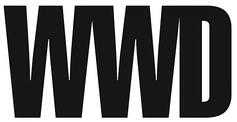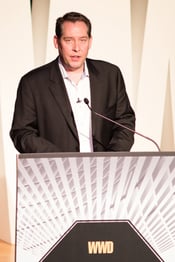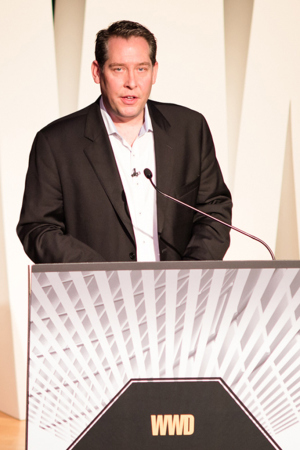According to the data guy, men’s wear is a robust, growing business where retailers, vendors and brands could all be enjoying higher margins.
 |
That was the key takeaway from Greg Petro, president and chief executive officer of First Insight Inc. Petro said the men’s market presents a “complicated environment” where trends change fast, but where growth is vigorous.
“Customer intimacy remains important. Consumers want to communicate. And with technology, you can engage consumers on that level,” Petro said, adding that with “predictive analytics,” men’s wear companies can also anticipate consumer behavior.
The Summit’s theme of “The New Dimension” of men’s wear was fitting to Petro’s remarks, which included an overview of a market that is growing one-and-a-half times faster than women’s wear and where online sales are growing at an impressive 17 percent.
More importantly, Petro said recent analytics suggest that men’s wear companies can be pricing product at significantly higher premiums. The market test was done at the Milan fashion shows earlier this year where First Insight engaged consumers using online games to gauge trend preferences for brands, designs and price points.
First Insight crunched 500,000 data points in the testing, and the results revealed that the top three preferred brands were: John Varvatos, Prada and Salvatore Ferragamo. The analytics also showed that “by a margin of three to one, people prefer coats without a belt versus coats with a belt,” Petro said, adding that the preferred colors were black, blue and brown — preferred by men and women alike.
And for men only, “oxblood/purple” and green/olive were tops. For women, gray and purple were winners. But it was the pricing front that was most intriguing, Petro said. On average, four of the five product categories tested could “bear a premium.
“We found that products could have carried a higher price point — much higher,” Petro said, adding that with certain products, such as leather, the value proposition could have supported a 44 percent higher price. Long coats could have fetched an 11 percent premium while overcoats and casual jackets could have garnered premiums of 5 and 3 percent, respectively.
“Men are also more willing to pay more than women — up to 30 percent more compared to the price women will pay for the same item,” Petro said.













